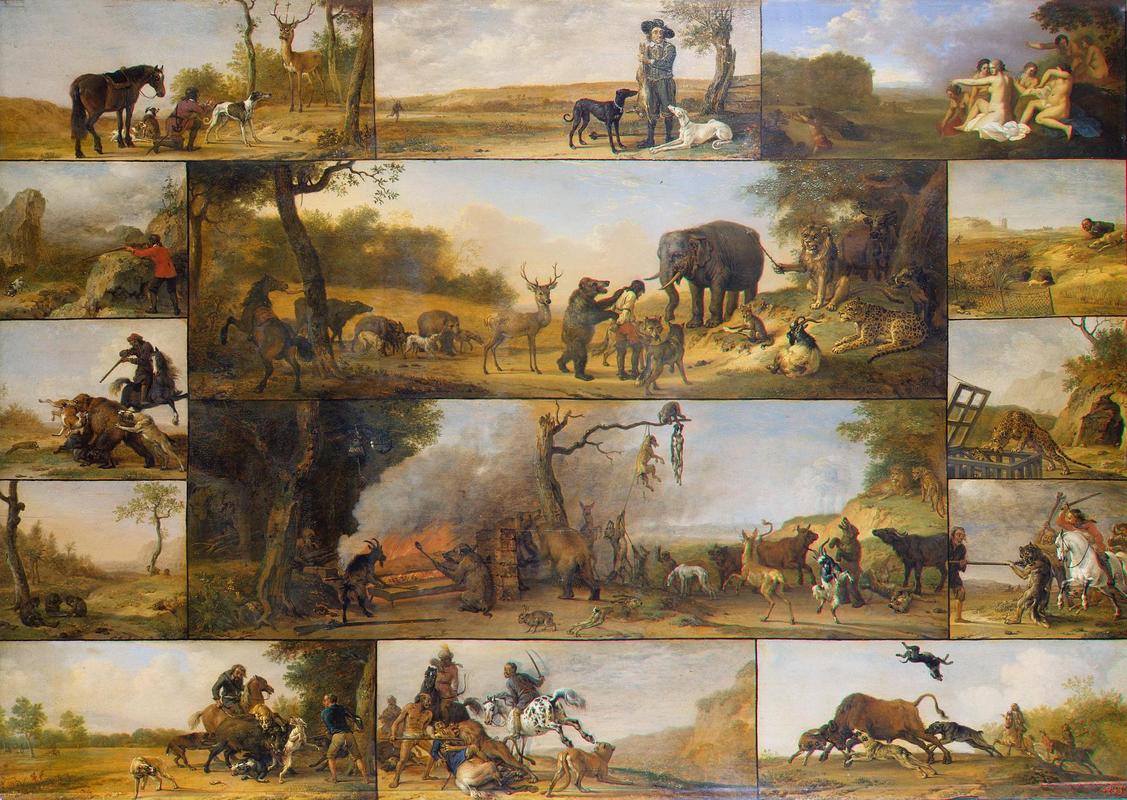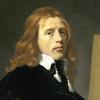More about Punishment of a Hunter

Sr. Contributor
Animal activism or political satire? Over the years many different meanings have been attributed to Paulus Potter’s Punishment of a Hunter, but there’s no definitive answer as to the artist's intention.
Potter always preferred depicting animals in his art over focusing on humans, as most artists of his day did. A critic dubbed him the “Raphael of the cows.” Typically, animals in painting were limited to portrayals such as Charles I at the Hunt, where a horse or pet was shown next to their royal owners, either bowing their head or staring reverently. Doing commissioned portraits for wealthy patrons was the way for an artist to gain notoriety, and only a few artists, such as Potter and Edward Landseer, were able to make a name for themselves painting animals.
Potter's love of painting animals almost prevented his marriage, as his intended bride’s father did not think him worthy of her. Luckily, Potter had some really good friends and came from a rich family. His buddies vouched for him and convinced her father that Potter was a worthy match.
Some have viewed this work as the first instant of animal activism in painting, citing Potter as an animal lover. Depending on when it was created though, it could have been a response to political turmoil in the Netherlands. The Hermitage museum lists the date of creation as 1647, but other art historians date it to 1650 instead. If it was made in 1650, it could be a metaphor for the new Prince of Orange Willem II and his military ambitions, a warning from Potter that being aggressive to others can be really bad karma. The former Prince, his father Frederick, died in 1647, so if the museum has the correct date, the satire may not apply.
Others have theorized that it was meant as send-up of the practice of putting animals on trial, such as a case in the Netherlands years prior where a bull was tried and sentenced for stabbing a woman with its horn. Things didn’t end well for the bull, but at least his meat was distributed to the poor. The animal trial in the center two panels is reminiscent of the stories of Reynard the fox, the wily trickster, and the court of animals who held him on trial repeatedly (to no avail).
While Potter's intent behind the work can’t be pinned down, his inspiration from mythos is clear in two of the top panels of the piece. The top left panel is inspired by the story of Saint Eustace. St. Eustace was originally a Roman general named Placidus, but converted to Christianity and adopted his new name after seeing the the image of Christ in the antlers of a large stag while out hunting deer. Here, Potter’s hunter has the same idea, and we see him bowing before a cross floating between the antlers of a stag.
Potter’s hunter grows his own antlers in the top right panel, inspired by Ovid’s Metamorphoses. Specifically the story of the hunter Actaeon, who happens upon the goddess Diana bathing and is turned into a stag as punishment. Actaeon is spotted by some of his fellow hunters and killed by his own hunting dogs. Potter’s hunter takes the place of Actaeon, and is seen fleeing in the distance mid-transformation.
Sources
- Beirne, Piers, and Janine Janssen. “Hunting Worlds Turned Upside Down? Paulus Potter’s Life of a Hunter.” Murdering Animals, 2018, 49–69. https://doi.org/10.1057/978-1-137- 57468-8_3.
- Bryan, Michael, and George Charles Williamson. Bryan’s Dictionary of Painters and Engravers Volume 4. Place of publication not identified: Hardpress Ltd, 2013.
- Jacobus. Golden Legend. Theclassics Us, 2013.
- Liedtke, Walter, Michiel C. Plomp, Rüger Axel, Reinier Baarsen, Marten Jan. Bok, Dam Jan Daniël van., James David. Draper, Ebeltje Hartkamp-Jonxis, and Kees Kaldenbach. Vermeer and the Delft School. New York: Metropolitan Museum of Art, 2001.
- Ovid, and K. Sara Myers. Metamorphoses. Cambridge, UK: Cambridge University Press, 2009.
- Phillips, Clive J. C. The Welfare of Animals: the Silent Majority. Brisbane?: Springer, 2010.
- “Punishment of a Hunter.” Hermitage Museum. Accessed April 20, 2020. https://www.hermitagemuseum.org/wps/portal/hermitage/digital-collection…











